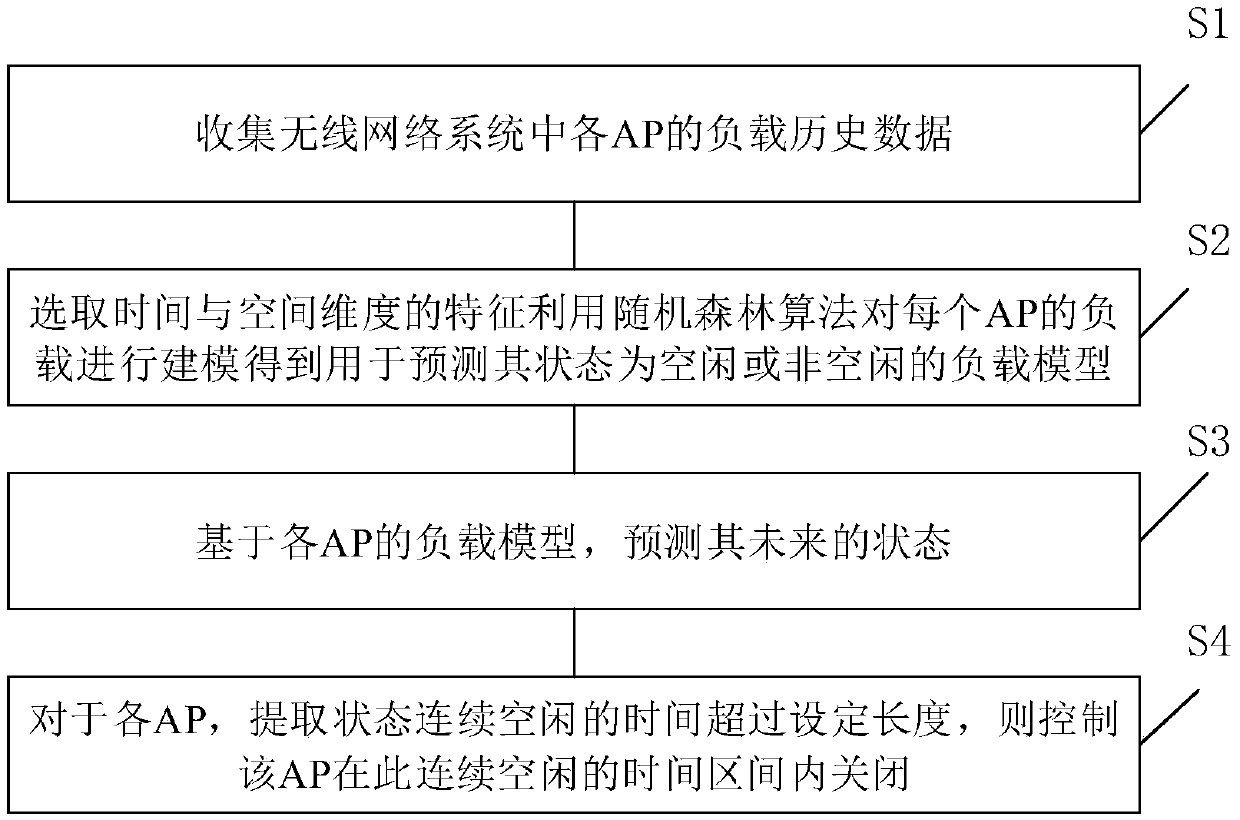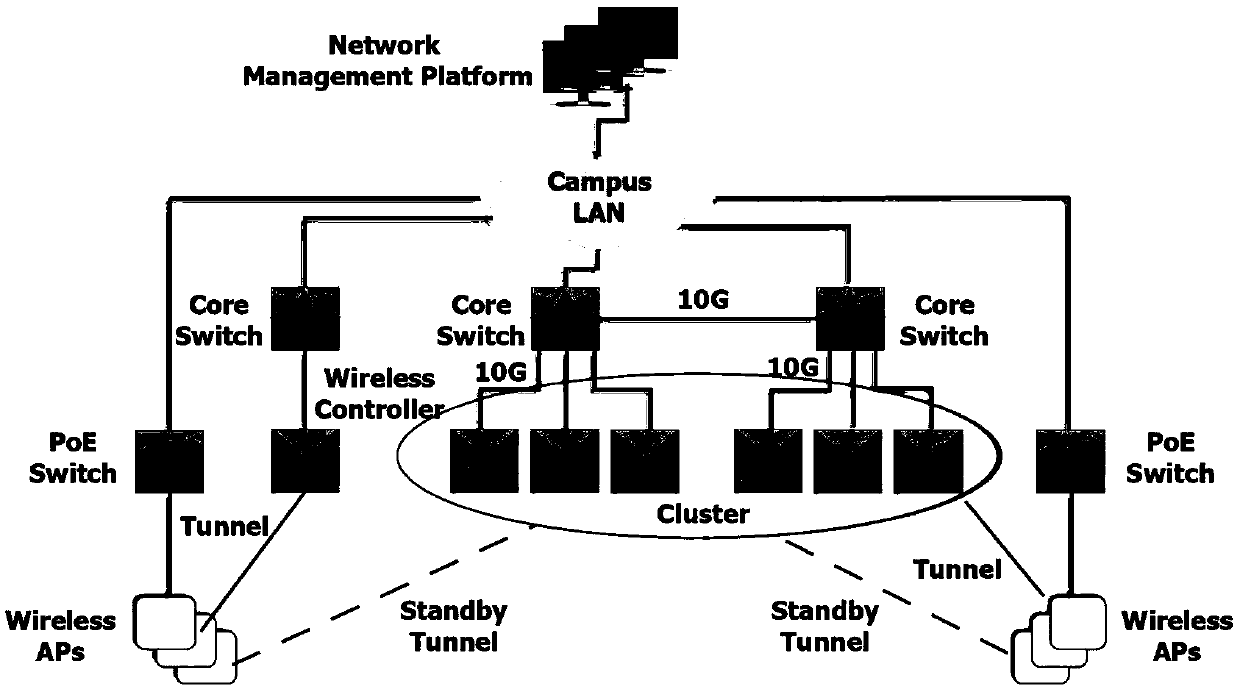Machine learning algorithm based intelligent energy-saving control method and equipment for APs (Access Points) in WiFi system
A machine learning and energy-saving control technology, applied in the direction of energy consumption reduction, advanced technology, network planning, etc., can solve problems such as energy waste, negative impact on end-user experience, and reduce wireless network signal coverage, to achieve lower power consumption, better performance, etc. User coverage balance effect, excellent energy saving effect
- Summary
- Abstract
- Description
- Claims
- Application Information
AI Technical Summary
Problems solved by technology
Method used
Image
Examples
Embodiment Construction
[0045] The present invention will be described in detail below in conjunction with the accompanying drawings and specific embodiments. This embodiment is carried out on the premise of the technical solution of the present invention, and detailed implementation and specific operation process are given, but the protection scope of the present invention is not limited to the following embodiments.
[0046] The present application discloses an AP energy-saving control system in a large-scale wireless network based on a machine learning algorithm. Nowadays, large enterprises, university campuses or other large organizations and units often deploy large-scale wireless network services, and provide almost ubiquitous WiFi access points to users through a large number of APs (Access Points). These large-scale deployed APs have brought a great burden to network management and energy consumption. By analyzing the data of a large-scale wireless network system in actual operation (coverin...
PUM
 Login to View More
Login to View More Abstract
Description
Claims
Application Information
 Login to View More
Login to View More - R&D
- Intellectual Property
- Life Sciences
- Materials
- Tech Scout
- Unparalleled Data Quality
- Higher Quality Content
- 60% Fewer Hallucinations
Browse by: Latest US Patents, China's latest patents, Technical Efficacy Thesaurus, Application Domain, Technology Topic, Popular Technical Reports.
© 2025 PatSnap. All rights reserved.Legal|Privacy policy|Modern Slavery Act Transparency Statement|Sitemap|About US| Contact US: help@patsnap.com



